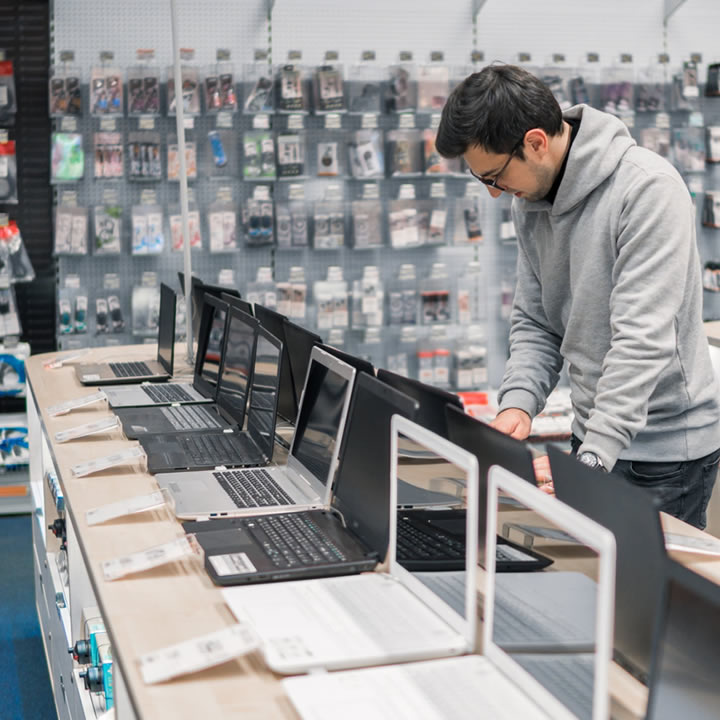Choosing the right laptop is never an easy task. The top models might not be the best for you, and the basic ones may not meet your needs. So you might do a bit of research on your own. First of all to find out what are your needs, answer the following questions for yourself.
What do you want to use it for?
And then based on the answer, we move in the direction of choosing the right laptop. Nowadays, we make notebooks that meet all needs, the only question is how willing we are to reach into our wallets to buy these devices. The bad news is that if we don’t follow the advice of the experts and choose a laptop that is a few thousand forints cheaper, we can easily catch a cold because there can be huge differences between similar series, and in the future, they may not be able to help us.
Internal storage -HDD or SSD?
One of the most important things to decide is internal storage. Although the storage space appears to be larger on the hard drive, its speed is significantly slower due to the mechanical components. If you prefer space over speed then Winchester (HDD) is enough for us.
However, if you don’t need a lot of storage space because you don’t want to use your computer to store a large amount of data, you may want to get a device with an SSD. If you store most of your stuff online, and your free time activity is mostly watching movies online or playing online games like Book of Ra 10 then you should go with SSD.
But there is a third option as well. If other needs arise, for which speed and large storage space are essential, it can certainly incur higher costs to compensate for the device that meets our needs. Usually, this is when we tend to Implement a dual solution which implies storage that has both SSD and HDD.
Processor – Intel or AMD?
The processor is the brain of the computer that performs the calculations, for laptops it is especially important what type of unit is in it, as this part is usually not replaceable or expandable. Here’s the most thorough way to think about how much complex activity you actually want to do in your notebook.
It will probably remain an eternal question as to which two major processor manufacturers are better. It is indisputable that AMD’s popularity – mainly because of its not-so-high prices – has curved upward in recent years.
Based on LiveIT’s experience, when we installed a notebook with an AMD processor, they turned on the cooling a lot more times and “hummed” disturbingly loudly in quieter places. Also, overheating on summer days is also quite a risk if you don’t get enough space for air exchange.
Looking at the other side, however, Intel processors may be considered by many to be “overpriced”. The latest i9-9900K Octa-Core series of retail premiums at the moment significantly drop the price of a laptop and may not be able to use it properly. It is possible that the software we are using is, say, not well written (programmed) and therefore will not be able to take full advantage of its performance, or the processor will not run all the threads to avoid overheating.
Therefore, it is not always worth buying the most expensive one, except that if we know for sure what we need, it is worth consulting in advance with someone who can assess the machine needs of our used software.
Random-Access Memory – how much does it take?
Low random-access memory (RAM) is an increasingly common problem, and it has fewer and fewer appearances when we have a lot on our computer.
In the general case, 1-2 GB is not enough to use your computer efficiently, with this configuration the programs will load noticeably slower and you will have to wait after most clicks.
4-8 GB is usually for general use, that’s the minimum a notebook needs to run fast enough. Here again, depending on the performance of the open programs and the amount of usage, you need to decide whether the selected memory may be enough.
16-64 GB if we want to do more serious technical work on our machine (3D design, video conversion, streaming, programming) then this is the “band” we will need.
When choosing, it is worth planning for the long term, thinking in advance whether the device we choose will be suitable later, whether we will have higher expectations for the machines or whether we will increase the version number in our program, which would require more performance.
Other needs – NumPad, display size, keyboard language, backlight, touch screens, aspects you might not even think about…
Before you buy a laptop, do preliminary surveys based on your own needs. Ask yourself what you need, what matters to you on a laptop. You may want to borrow your laptop from your friends to know if an unknown laptop is in front of you what you first look at it.
Also, think about how much you will transport it. Do you need it to the university, work, or you will use it only at home at your table?
Conclusion
Nowadays, with programs that require more and more performance, let’s not make the mistake of buying the minimum hardware we need now. It may soon become apparent that constantly updating programs results in increased functionality, which in turn brings increased performance – as well as slowing down the machine.
You are currently reading a general description, with brand-independent devices – except for processors – but of course, there can also be gigantic differences between brands/prices/specifications!

